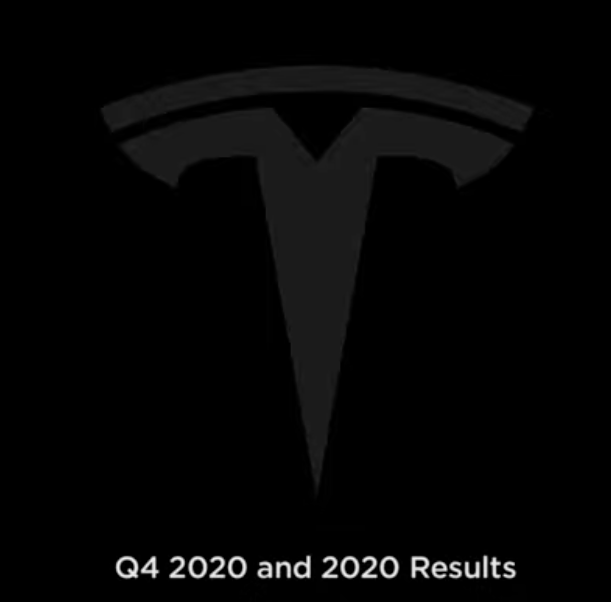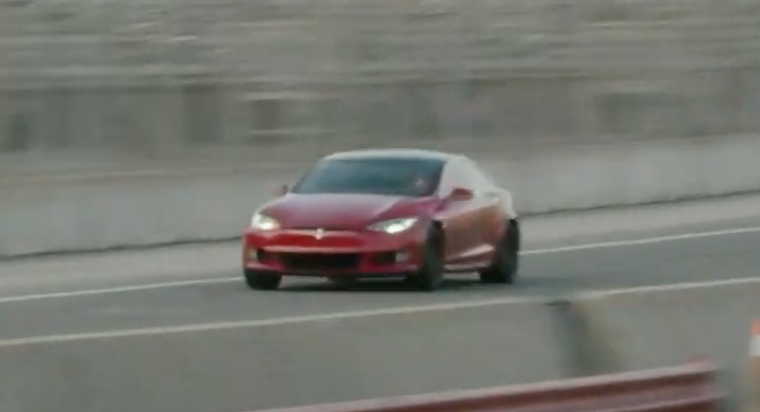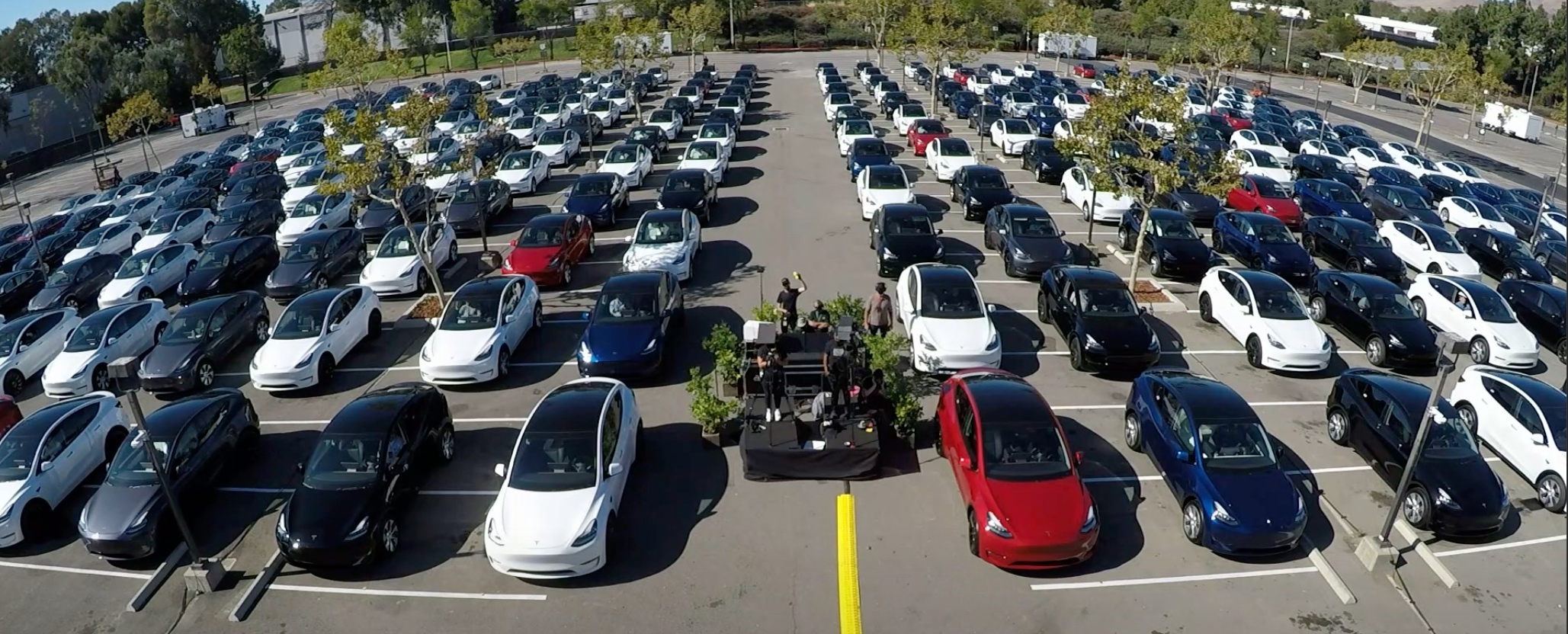
2020 Q4 Tesla Earnings Call Notes
Today was another action-packed day for Tesla fans as the company released their full earnings report for Q4 2020 along with details surrounding the newly refreshed Model S & X. I spent sometime listening to today’s earning call and have created some notes which I have shared below for your reference. Enjoy! Opening Remarks from Elon Defining year on many levels, especially with the pandemic Important milestone of delivering 500,000 cars, almost as many as they had previously produced in their entire history Free cash flow of 2.8B after spending >$3B on new factories and other expenditures Industry leading GAAP operating margin, positive net-income, and record cash flow Continuing to ramp capacity in Fremont & Giga Factory Introduced heat pump to all vehicles Tesla is the first automaker ever to cast the rear third of the vehicle in a single, cast piece in the largest, most advanced casting machine ever made Still planned to start production in Giga Austin & Giga Berlin The pilot battery facility on Kato Road came online in 2020 and is already considered one of the 10 biggest battery factories in the world Model S & X Plaid & Plaid+ introduced and already in production New Model S will begin delivery in February New Model X will begin delivery after (March / April timeframe) Full unveil of the Model S & X will be coming in the next two weeks New Model S is the first ever production car to go 0-60 in under 2 seconds (he goes on to highlight it is the fastest EVER road-ready production car) The Model S is referred to as a Luxury Sedan and will have support for a 3rd row of seats Price is being raised $10k to account for additional improvements to interior, fit/finish, etc. Massive progress with Full Self Driving Around 1000 people in the public beta Very common for Elon to have 0 interventions on his drives with the latest builds, even on routes he has never been before FSD subscription coming in February Elon believes that the car will be able to drive itself better than a human by the end of this year Potential around FSD especially for Robotaxi use-cases dramatically increases their utility and thus helps explain Tesla’s current valuation Even with a conservative estimate of the cars becoming 2x more useful thanks to FSD, it would essentially 2x the value of the company which is mostly margin (because FSD is really just software) He gives an example of $50B in cars is like having $50B of incremental profit While 2020 was a turning point for the company they believe 2021 is another big year for Tesla with new factories and products coming online Logistics will be greatly simplified thanks to new factories in Austin & Berlin coming (less capital tied up in with in-transit vehicles) Financials Generate strong free cash flows, record $1.9B in Q4 while continuing to invest in growth and future initiatives Reduce use of debt / various working capital lines including funneling $2B of converting debt in Q4 continuing into Q1 2021 Achieved first calendar year and 6 sequential quarters of profitability Auto gross margins increased from 2019 to 2019 despite reductions in ASP and new product launches In Q4, stock-based comp (SBC) increased which was driven by stock price over 2020 grant process, portion of which is unique to just Q4 Impact of SBC increase across those COGs and OPEX Auto gross-margins in Q4 was impacted by 2 things: Investments in products made in Fremont S & X line refresh Single-piece castings on Model Y Introducing Heatpump to Model 3 Supply chain instability and pandemic-related inefficiencies With adjustments made with previous two items in mind, improvements were still noticed in auto gross-margins Services and other PNL also affected by previous items including onboarding new services personnel Continuing to ramp service capacity and focus as fast as possible Energy gross margins related to: Solar roof-related ramp costs Typical lease seasonality in lease PPA business OPEX as a % of revenue continues to reduce despite impact from items mentioned and continued investment in innovation Early settlement of convertible notes resulted in an additional $100M of expenses for Q4 Tesla believes their operating margins will continue to lead the industry and grow going forward 2020 may be their most meaningful year yet considering where their investments Continue to expect a longterm volume CAGR of 50% and may exceed in 2021 As production ramps the volume numbers will be skewed towards the second half of the year Q1 volumes will be positively impacted by ramp of Model Y from Giga Shanghai S & X production will be low due to refreshed products Still managing to get through global semiconductor shortage and port capacity Continued focus and investment around Supercharging and service capacity while driving costs Global demand continues to outpace production Questions from Say Question: What is holding Tesla back from being market leader in Solar? Answer: Expect to become the market leader in solar now that they are beyond the Model 3 ramp which required all hands on deck for several years. Looking to achieve an industry leading cost structure which would then give them industry leading pricing. One area of focus for Solar going forward is better integration between Tesla Solar / Solar Roof and Powerwall and hope to release it before the end of the year. The plan is continue to reduce complexity and costs around install later this year as well. Question: Could existing owners get the ability to transfer FSD to their new vehicle? Answer: Elon mentioned that Tesla is not considering allowing folks to transfer FSD to a new vehicle (via trade-in) however did note that they do indeed account for the presence of FSD in cars at trade-in vs ones that do not. Elon also believes the market currently undervalues FSD at this time however for folks that want to Question: Can you give us an update of the dry coating of the battery electrodes? Answer: While Tesla expected some issues with the new dry coating process and associated technologies developed for it, the Kato Rd team has addressed each manufacturing problem they have encountered along the way. The team continues to ramp yields week over week and month and month as they move up the production S-curve. The cell team has reinforced the design and reasserted their confidence in the dry process & 4680 design (meeting performance & cost targets). From a capacity perspective, Tesla has the following at Kato Rd and ready for a full production ramp by the end of 2021: 10GWh of capacity Entire production staff almost hired Material supply chain established Enough production confidence with 4680 design and production process & equipment to kick off manufacturing equipment & facility construction to support ramp to 100GWh production in 2022 Question: Why are you confident that Tesla is going to achieve L5 autonomy in 2021 and why isn’t Dojo necessary to get there? Answer: Elon is confident by his understanding of the technical roadmap and the progress they are making with each iteration. No longer rare to have the car drive you from point A to B even with complex intersections and situations in between. They have so much training data in the field that they are then improving rapidly based on that (this is in part thanks to their homegrown video labeling software). Still a few of the neural nets need to be upgraded to support video training and inference. As they transition each NN to video the performance has been remarkable. Dojo may be the best NN training computer by an order of the magnitude when it comes online. Elon expressed interest in offering access to Dojo via a SaaS-offering as they intend to share their investment with other s (For a cost of course). Dojo’s big goal is to increase the speed of training while also increasing the reliability of the system from 100%-200% of the average human to 2000%! Question: What is Tesla’s current GWh run rate of 4680 battery cells? Answer: Tesla’s goal is 100GWh of total capacity in 2022, not important to look at run up to that. Installing capacity in 2022 for 200GWh / year and plan to achieve 50% of that capacity by end of 2022. Question: What is Tesla doing to address service experience? Tesla had a reputation for great service now it is impossible to call a service center and appointments are scheduled weeks out. Answer: Tesla continues to focus on vehicle reliability which has resulted in service visits being reduced by 1/3 over the last year (the ultimate goal is no service). For situations that require service, they are continuing to ramp mobile service which currently accounts for 40% of all service visits in NA (goal is 50% by end of 2021). Also trying to service the cars in less than 2 hours getting them back on the road. For 100 of the 140 global service centers, the wait time for appointments is <=10 days or less and Tesla plans to drive this down further across the remaining 40 service centers. On top of this, Tesla continues to open new service centers and plans to open 46 new service centers in the 1H of 2021. In terms of phone support, Tesla is going to continue to funnel service requests through the app and move away from the phone due to scalability, media sharing, ease of payments, written records, etc. Questions from Institutional Investors Question: What are the key milestones we need to achieve in order to evolve current FSD to commercial L4 / L5 ride sharing solution? Answer: We need transition of remaining NNs in car to video and in order to do that the whole stack has to be upgraded to support video (including gathering surround video clips, label everything in video clip, and train against that, then have those NNs operate the car). This is contrary to the previous process which just looked at a single camera and single frame at a time. They eventually iterated to an approach that used surround video on a single frame basis however now they are including the time dimension as well. FSD Beta will be expanded to include more and more people very soon. Question: Does Tesla plan or expect to license any software apps (FSD, Autobidder, etc) to 3rd party OEMs? Answer: Elon mentioned they are very open to licensing to 3rd parties and have actually held discussions with 3rd party OEMs for licensing Autopilot. Elon believes that Tesla must first prove Tesla Autopilot is capable of FSD which will become obvious later in 2021 at which point they’ll be more than happy to license to other car companies (not trying to keep it exclusive to Tesla). They haven’t thought as much about Autobidder however just like with Autopilot they are open to licensing to 3rd party companies. 3rd party access to Supercharger network is another thing they are open to. Question: Do we need to do things differently to win the Chinese EV market? Answer: Tesla is currently the leader in the Chinese EV market so they are pretty confident they are on the right track. Very few Chinese customers (1-2%) have selected the FSD option so they have work to do in this department. Question: Is it fair to argue that the best way to think about the company’s longterm earnings power is tied to profit per unit of battery capacity? 3TWH target implies half of long term battery capacity goes to storage depending on what you assume for pack size for 20 million vehicle unit goal. Answer: The fundamental limit on EVs is output of battery cells in GWh and you can’t grow faster than this. Thanks to gain in vehicle efficiency (best in class), they are getting more with less battery cells. Tesla is producing their own cells to accelerate total cell output while still relying on cell suppliers as they need as many batteries as they can get (completely supplemental). Elon thinks total value of company can be calculated based on total cell output that supplies vehicle output and 2x it as well as 2x autonomy revenue. Question: Where are you in CyberTruck development and what are your expectations for CyberTruck deliveries in 2021? Answer: Finished all engineering related to CyberTruck and soon will be ordering manufacturing equipment. Will be using even bigger casting machines (8000 ton casting press) for the rear body casting of the CyberTruck (vs 6000 ton casting press for the Model Y). Tesla is very confident that the vehicle will be incredible however volume production will realistically begin in 2022 (only a few deliveries in 2021). Questions from Queue Question: Could you talk about regulatory environment for FSD and how you see it play out? Answer: Tesla is currently not limited on a rule basis re: FSD in the US however they are expecting to work with regulators to establish reliability standards. In Europe current rules are slowing down progress and limiting them to L3 autonomy. China has shown interest in working on L4 and L5 later in 2021 so expect regulatory space to be dynamic. Question: How are you managing your exposure on raw material costs? Answer: For supply chain the first priority is to deal with disruptions thanks to COVID, shipping in particular (boats) between Asia and NA, and look forward to pricing. Tesla is entering into long term agreements with preferred suppliers to ensure they have what they need to continue 50% CAGR. Question: Any expectations on what investors should expect on the regulatory credit front? Answer: Difficult to forecast and 2020 proved that as it was higher than expected. In long term, regulatory credits will be less which is why they do not include them in their future financial plans. Question: What should we think of use for capital funds raised in 2020 beyond maturities? Answer: Tesla is thinking about reducing debt and early conversions of convertible debt is a priority currently. They now have the ability to design factories and tooling around desired end state vs having to start small and add-on as they go allowing them to ramp much faster. Service expansion is really important to future of company and will continue to see a focus for the company (as well as Supercharging network expansion). Question: Does this require suppliers to have the capability to build 4680-based structural battery packs? Answer: Tesla is in talks with suppliers to produce 4680 cells however it is not required. The new Model S & X use the new 18650 cell and will continue to use that form factor for a few more years. Over time they will reduce variance in form factors and standardize on 4680s as their production ramps. Question: Does Tesla have any plans regarding EV vans? Answer: Tesla is definitely going to make an EV van however due to battery output constraints limit product diversity. Right now they could produce the Semi however volume would be extremely limited due to battery cell availability. They will have enough cells for the Semi once the 4680 enters volume production and the same applies to doing an EV van. Question: Is there an update on the next-gen FSD chip? Answer: The current software does not use all of horsepower offered by the current FSD hardware and will be more than sufficient to achieve FSD. With that said, the next-gen hardware is (FSD v2) 3x as powerful and will be paired with higher resolution cameras and sensors. They are limiting resources on development of new chip since FSD is completely achievable with current hardware (new chip will be improvement but not game changer). Question: Are your additional efforts trending towards greater battery ca pacity, charging, etc., and what are timelines for these goals? Answer: Elon mentioned they are confident and currently on track to achieve goals mentioned on Battery Day. Question: (More of a Statement) Caller suggests there is something to Elon stepping down as CEO, becoming chief architect, citing a recent trip to Hawaii to meet with Larry Ellison. Answer: Elon is committed to running Tesla for next several years and has no plans to step down at the current time. The mission of sustainable energy still needs to be achieved and Elon is insistent on making a dent before thinking of taking a different role within the company. Question: Since Semi trucks travel predictable highway miles, will Tesla Semis be the first to achieve full autonomy? Answer: Highly confident that the Tesla Semi will indeed be the first fully autonomous Semi on the road due to the exact same FSD hardware as existing Tesla vehicles. Some software parameters need to be adjusted due to vehicle size otherwise little changes need to be made (no retraining etc.). Question: Could you explain why BEV will win over Hydrogen fuel cell tech? Answer: Elon mentioned how he has received this question a million times before and cited being asked this before the first roadster was released. Hydrogen is a “big pain in the ass really” and if you are going to use an alternate energy storage mechanism to H, Elon thinks they should use propane or methane. Tesla is very confident they can achieve long range trucking with BEVs even with current energy densities. Additional Tesla Semis will be on the road very soon. Links Tesla Q4 and full year 2020 Financial Results and Q&A Webcast Tesla Q4 and FY2020 Update Presentation Tesla Investor Relations Tesla Owners Online Podcast / Episode 95 - SeXier Again!


